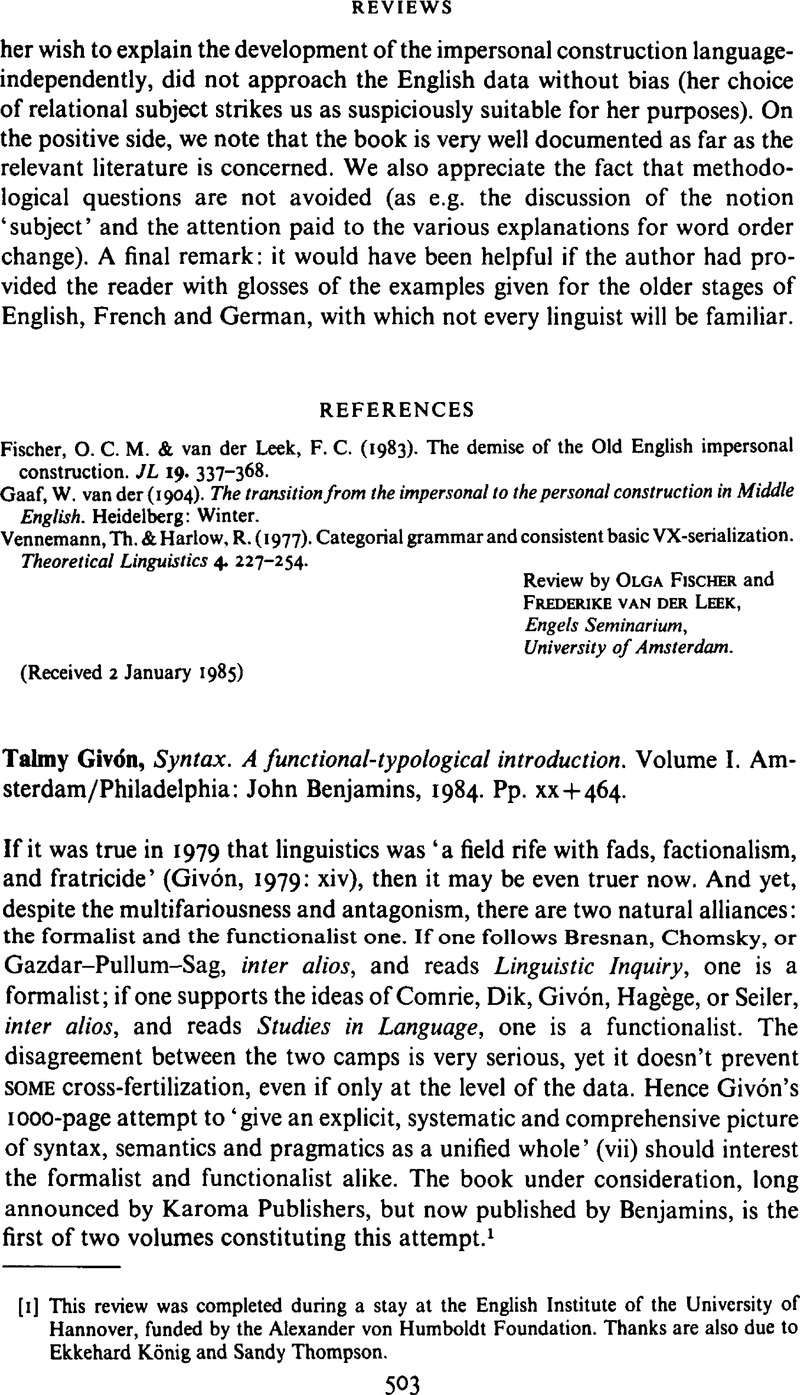Crossref Citations
This article has been cited by the following publications. This list is generated based on data provided by Crossref.
Nuyts, Jan
1995.
Handbook of Pragmatics.
p.
80.
Arka, I Wayan
2005.
Speech levels, social predicates and pragmatic structure in Balinese.
Pragmatics. Quarterly Publication of the International Pragmatics Association (IPrA),
Vol. 15,
Issue. 2-3,
p.
169.
Fernández Garay, Ana
2012.
Entre el sustantivo y el verbo.
LIAMES: Línguas Indígenas Americanas,
Vol. 6,
Issue. 1,
p.
61.
Suihkonen, Pirkko
and
Whaley, Lindsay J.
2014.
On Diversity and Complexity of Languages Spoken in Europe and North and Central Asia.
Vol. 164,
Issue. ,
p.
xi.
Rojas Nieto, Cecilia
2014.
Verb sequences and early verb inflection in Spanish.
Language, Interaction and Acquisition,
Vol. 5,
Issue. 1,
p.
82.
2014.
The Language of Emotions.
Vol. 4,
Issue. ,
Green, Clarence
2014.
On the relationship between clause combination, grammatical hierarchy and discourse-pragmatic coherence.
Functions of Language,
Vol. 21,
Issue. 3,
p.
297.
García Velasco, Daniel
2014.
Activation and the relation between context and grammar.
Pragmatics,
Vol. 24,
Issue. 2,
p.
297.
Zhang, Keding
2014.
A Cognitive Grammar approach to the SLocPAdjC in Mandarin Chinese.
Cognitive Linguistic Studies,
Vol. 1,
Issue. 2,
p.
218.
Li, Wendan
2014.
The pragmatics of existential-presentative constructions in Chinese.
International Journal of Chinese Linguistics,
Vol. 1,
Issue. 2,
p.
244.
Maldonado, Ricardo
and
Guzmán, Rocío
2014.
Apenas.
Review of Cognitive Linguistics,
Vol. 12,
Issue. 2,
p.
443.
Harrison, Simon
2014.
The organisation of kinesic ensembles associated with negation.
Gesture,
Vol. 14,
Issue. 2,
p.
117.
Daleszynska-Slater, Agata
2015.
Language Issues in Saint Vincent and the Grenadines.
Vol. G51,
Issue. ,
p.
45.
Holvoet, Axel
2015.
Voice and Argument Structure in Baltic.
Vol. 2,
Issue. ,
p.
367.
Trudgill, Peter
2015.
Language Structure and Environment.
Vol. 6,
Issue. ,
p.
133.
García Velasco, Daniel
2015.
Activation and the relation between context and grammar.
Pragmatics. Quarterly Publication of the International Pragmatics Association (IPrA),
p.
297.
Foreman, John
and
Dooley, Sheila Ann
2015.
Valence Changes in Zapotec.
Vol. 110,
Issue. ,
p.
237.
Tantucci, Vittorio
2015.
Traversativity and grammaticalization.
Chinese Language and Discourse. An International and Interdisciplinary Journal,
Vol. 6,
Issue. 1,
p.
57.
Enghels, Renata
and
Wylin, Kim
2015.
Expressing the source of dispossession acts in French and Spanish.
Languages in Contrast,
Vol. 15,
Issue. 1,
p.
102.
Filchenko, Andrey
2015.
Negation in Uralic Languages.
Vol. 108,
Issue. ,
p.
159.


